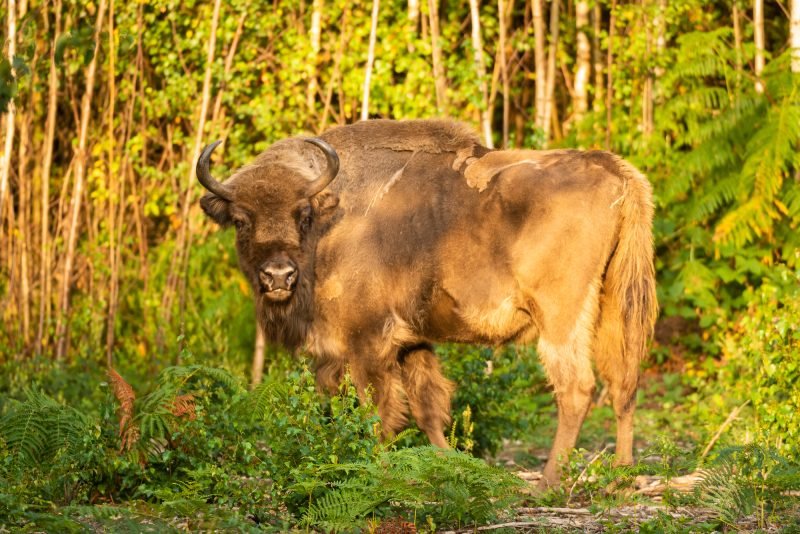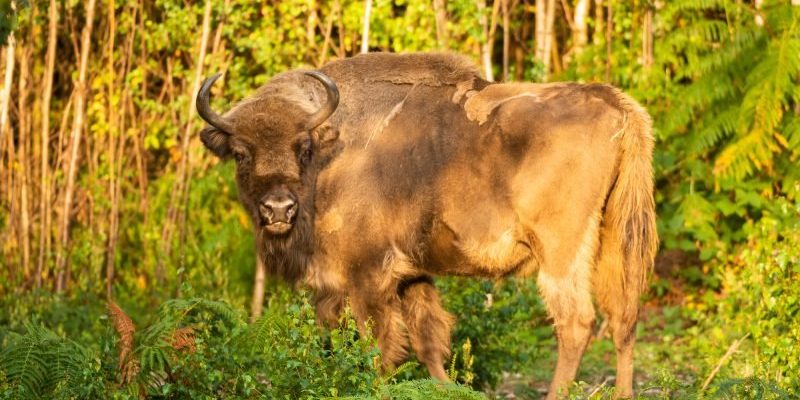
So, here we are, diving into the world of the European bison! Think of them as the gentle giants of the forest. They can weigh up to 1,100 pounds and stand about six feet tall at the shoulder. But don’t let their size intimidate you. Understanding how to react if you encounter one can significantly enhance your wildlife experience. Let’s explore your options for safely navigating a bison sighting, while also appreciating these magnificent animals.
Recognizing a European Bison
First, let’s make sure we know what we’re looking at. The European bison, or *Bison bonasus*, is distinct from its American cousin. They have a shaggy, brown coat and impressive curved horns, which can span as wide as 30 inches. Their robust build allows them to thrive in cold climates, and they often inhabit areas like forests and grasslands, quietly munching on vegetation.
When spotting a European bison, you might see them in small herds, usually made up of females and their young. Males typically roam alone or in small bachelor groups. The bison’s large, expressive eyes and strong posture convey a sense of calm, but don’t be fooled—these animals can be unpredictable, especially if they feel threatened.
Being able to identify a European bison also helps you distinguish between it and other large animals you might encounter, like cows or buffalo. Cows tend to be more docile and less imposing, while bison bear a certain wildness that puts them in a different league altogether.
Staying Calm and Observing from a Distance
You’ve spotted a European bison, and your heart is racing. Here’s the thing: your best move is to stay calm. Panicking won’t help anyone, and it could provoke the bison. Remember, this is an animal that can weigh as much as a small car!
When you see a bison, take a step back, and admire from a distance. Use binoculars if you have them. Try to view it as a rare chance to witness something spectacular in its natural habitat. Most importantly, do not approach. Bison are known to charge if they perceive a threat. Even if they’re grazing peacefully, it’s vital to give them plenty of space—at least 100 meters if possible.
Taking a moment to observe can be a rewarding experience. You might notice their social behaviors, like mothers caring for their calves or bison grazing together. Just remember, your safety comes first, and giving them their room ensures a safer encounter.
Understanding Bison Behavior
You might be wondering how bison generally behave. Honestly, they’re often gentle giants. They typically prefer to avoid humans and will usually move away if they sense you. However, if they feel cornered or threatened, their natural instincts kick in, and they can become aggressive.
Here are a few behaviors to watch for:
- Head shaking: This might indicate annoyance or discomfort.
- Stomping: A warning sign that they’re feeling threatened.
- Chasing: If they start running towards you, that’s a clear sign to back away quickly.
With these behaviors in mind, stay alert. If you see a bison showing signs of agitation, it’s your cue to adopt a low profile. Back away slowly. You might be surprised how quickly they can go from a peaceful grazing session to a sudden charge, so it’s best to trust your instincts.
Safe Retreat Strategies
If you find yourself too close for comfort, it’s essential to have an exit plan. The first step is to know your surroundings. Are there trees or hills nearby? These can act as natural barriers between you and the bison.
Here’s how to retreat safely:
- Do not run: This may trigger the bison’s instinct to chase.
- Back away slowly: Keep your eyes on the bison without making sudden movements.
- Look for cover: If possible, move behind a tree or a boulder for protection.
It’s wise to have a buddy with you on hikes. If you’re solo, ensure your phone is handy for emergencies, and pack some snacks and water to sustain you should the need arise for a longer retreat.
Avoiding Bison Areas and Following Guidelines
While the chance of encountering a bison can be exciting, it’s also crucial to understand where these animals roam and follow guidelines to avoid unwanted encounters. Many national parks and reserves have set rules for a reason—to protect both wildlife and visitors.
Always stick to marked trails and avoid venturing into areas where bison are known to roam. Research the region you plan to visit. Some parks have designated viewing areas that keep you safe while allowing you to enjoy the sight of these incredible creatures.
When in doubt, check in at visitor centers for updated information on bison activity. They may even provide tips on where to spot them safely!
Respecting Wildlife and the Environment
Respect is key, both for the bison and the environment they inhabit. That means no feeding the animals, as tempting as it might be. Feeding wild animals alters their natural behaviors and can lead to dangerous situations for both humans and animals.
Do your part to keep the environment clean. If you pack it in, pack it out! Litter can harm wildlife and disrupt their natural habitats. By practicing respect and responsibility, you help ensure that future generations can enjoy experiencing these majestic creatures within their natural settings.
Also, consider spreading the word about wildlife protection. The more informed people are, the more they can contribute to preserving these wonderful species.
Encountering a European bison can be one of the most memorable experiences in nature, but it’s important to stay safe and respectful. Keeping your distance, remaining calm, and following park guidelines will not only protect you but also help preserve the bison’s wild spirit. After all, it’s about protecting their home as well as your own.
So, next time you’re wandering through Europe’s wild patches, remember these tips. With a little knowledge and a lot of respect, you can enjoy the thrill of wildlife encounters without putting yourself—or the bison—in danger. Happy hiking, and may your adventures be filled with wonder and awe!

